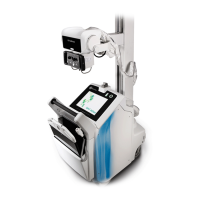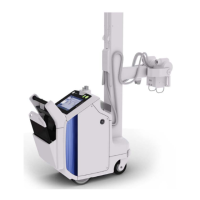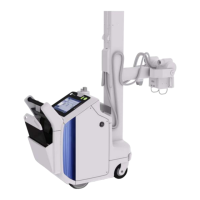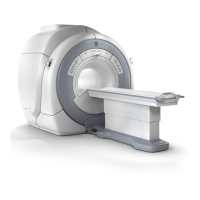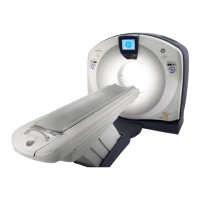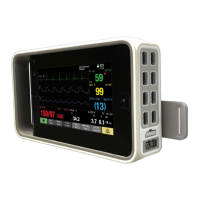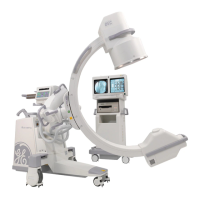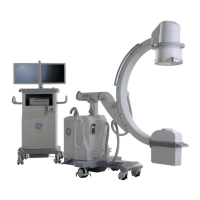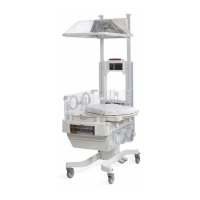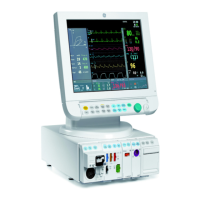Chapter 2: Safety and Regulatory
5495975-1EN Rev.9 2-14
© 2013-2017 General Electric Company. All rights reserved.
Table 2-6 Recommended separation distances between portable and mobile RF
communications equipment and the Optima XR646 – for EQUIPMENT and SYSTEMS that are
not LIFE-SUPPORTING
Radiation Safety
Always use the Optimal technical factors for each procedure to minimize X-ray exposure and
to produce the best diagnostic results. In particular, you must be thoroughly familiar with the
safety precautions before operating this system.
CAUTION There should be no people other than the patient in the exam room
during x-ray exposure. If circumstances require another person to enter
the room while x-ray exposures are planned or possible, that person
should wear a lead apron in accordance with accepted safety practices.
Recommended separation distances between portable and mobile RF communications equipment and the Optima XR646
The Optima XR646 is intended for use in an electromagnetic environment in which radiated RF disturbances are
controlled. The customer or the user of The Optima XR646 can help prevent electromagnetic interference by maintaining
a minimum distance between portable and mobile RF communications equipment (transmitters) and The Optima XR646
as recommended below, according to the maximum output power of the communications equipment.
Rated Maximum Output Power (P)
of Transmitter Watts (W)
Separation distance according to frequency of transmitter m
150 kHz to 80 MHz 80 MHz to 800 MHz 800 MHz to 2.5 GHz
0.01 0.12 0.12 0.23
0.1 0.37 0.37 0.74
1 1.17 1.17 2.33
10 3.69 3.69 7.38
100 11.67 11.67 23.33
For transmitters rated at a maximum output power not listed above, the recommended separation distance d in metres
(m) can be estimated using the equation applicable to the frequency of the transmitter, where P is the maximum output
power rating of the transmitter in watts (W) according to the transmitter manufacturer.
NOTE 1 At 80 MHz and 800 MHz, the separation distance for the higher frequency range applies.
NOTE 2 These guidelines may not apply in all situations. Electromagnetic propagation is affected by reflection from
structures, objects and people.
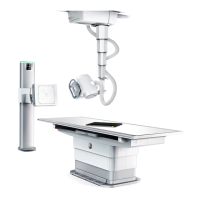
